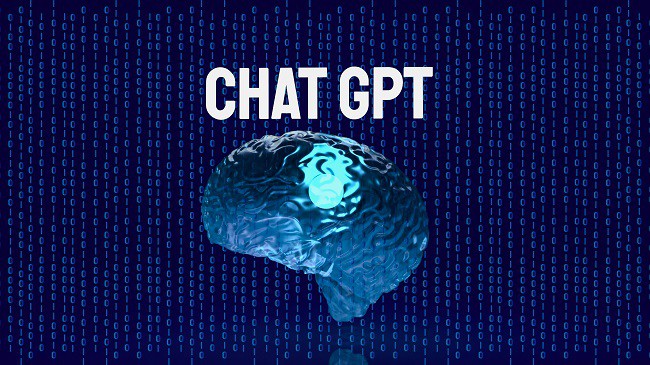How to use ChatGPT to support teachers
The World Bank Blogs: ChatGPT 3.5 – an artificial-intelligence (AI) chatbot – has been around since November 2022. To say it has the potential to revolutionize education systems is an understatement. Currently, it’s unclear exactly how the chatbot will affect the sector, but it’s clear it is both a threat and a gamechanger. There are the skeptics, who have tried to ban ChatGPT in schools, and the advocates, who think it is the “silver bullet” solution to a host of education challenges around the world.
To the skeptics’ point that the chatbot is detrimental to the learning process, it’s fair to say it has and will continue to disrupt the most traditional learning tools teachers have used for decades (e.g., writing and revising essays). What follows is an uncomfortable question: With a shortage of 69 million primary and secondary teachers around the world, could ChatGPT supplement teachers, or even replace them?
The launch of ChatGPT has demonstrated the potential for the technology to enhance, and in some cases replace, some of the activities and tasks done within jobs by humans. Will teachers – considered a major determinant for student learning, wellbeing, and long-term success – be an exception? Could the chatbot independently complete tasks currently done by teachers? If so, what are the associated risks? How can teachers use ChatGPT to enhance their practice and/or improve the efficiency of certain tasks?
The opportunity: using ChatGPT as a tool
Here are some examples of how policymakers could encourage teachers to use ChatGPT.
- Enhance lessons. A major challenge for teachers in low- and middle-income countries (LMICs) is transforming a dense curriculum into an engaging lesson. Teachers can use ChatGPT to translate learning objectives into engaging lesson plans, get ideas for preparing classes, or draft new assignments or assessments. ChatGPT can help with lesson preparation and proficiency, but not delivery. As such, teachers will need pedagogical proficiency to teach the lesson with high quality.
- Create assessment questions. Teachers could use ChatGPT to improve assessment questions and generate multiple-choice items. They could also use it as an input to encourage higher-order thinking skills by providing prompts for the essay questions and practical tasks. Teachers can use different types of assessment that could help students to develop critical thinking, problem-solving, and collaborative skills.
- Support with language barriers. Although it would be ideal for countries to ensure teachers instruct in their native language, the reality is that some systems – despite evidence to the contrary – are moving away from teaching in the local language and shifting toward a second language (i.e., English). In these contexts, teachers also do not know English and have difficulty teaching in a language they don’t understand. Here, the chatbot could serve as a tool for improving the teachers’ language proficiency, helping them to instruct more effectively in their native language or in a foreign language. For example, Duolingo and GPT claim to offer affordable and accessible highly personalized language lessons.
- Provide additional support to students. Teachers could use ChatGPT to cultivate student curiosity and create ideas for their homework assignments. AI tools are particularly useful when they identify the source information used in the chats. The risk is that instead of asking for help, the students ask the chat to complete the homework on their behalf. In addition to teaching about integrity, teachers can address this risk by discussing the limitations of these tools (see Privacy Risks, Bias, or Hallucination). Finally, teachers should direct their attention towards questions that cannot be answered by ChatGPT. Namely, questions that require specific knowledge that is outside of the chatbot’s training data, such as, human emotions or subjective perspectives.
- Grading assessments and papers. ChatGPT can be used to automatically grade multiple-choice/one-answer tests; it can also help teachers with standards-based grading. It could create a robust dataset for teachers to analyze and better differentiate student learning levels. This has potential unintended consequences for low accuracy, poor grading or false positive proctoring (mistakenly red flagging students for cheating). When considering systems for proctoring or grading, it is critical to take measures to secure fairness, accountability, confidentiality, and transparency of their algorithms whenever needed.
- Tutor students. Teachers can use ChatGPT to provide online tutoring services to students. This could give students an adaptive learning assistant “for free” by adjusting to the learning needs of the students, especially in contexts where teachers are responsible for many students and don’t have the bandwidth to tailor their instruction to each student’s needs. According to Khan Academy, GPT could guide students as they progress through courses. This is still an early technology, and it’s important to gather more evidence and require proactive supervision at scale. Non-supervised tutoring runs the risk of unintentionally harming students, as ChatGPT can not only “make stuff up” but can also lead to disturbing conversations.
The bottom line: 5 takeaways for policymakers
Similarly, prohibiting students from using the Internet is impractical, as it is an integral part of our daily lives. The focus for policymakers should be on utilizing ChatGPT in the most effective way possible.
ChatGPT could present an opportunity in LMICs, though policymakers will need to ensure all users have access to critical infrastructure and advanced digital skills. At a minimum, policymakers should adhere to these ground rules if they plan to incorporate ChatGPT in their education system.
- Collect information: Policymakers should first understand if and how teachers and students are currently using ChatGPT before deciding on any policy that would impact its use. Teachers should also be a part of the decision-making process to determine how ChatGPT will be utilized;
- Revisit digital skills: At a minimum, policymakers must ensure all users develop some level of “algorithmic awareness” to understand the challenges of misinformation and other ethical ramifications. For instance, teachers will need explicit training on how to understand and use this technology;
- Raise awareness: Relatedly, as part of these trainings, policymakers should disseminate information to all users on the limitations of this technology, including inherent biases, underrepresented countries, and languages, etc., emphasizing the lack of evidence available as to its usefulness for learning;
- Hold technology providers accountable: This technology is quickly changing, and it will be difficult to regulate. Even so, policymakers should hold the providers of this technology accountable and promptly assess how to prevent the misuse of it. Regulation is key, as ChatGPT currently has unknown implications on the teaching and learning process and could thus be both advantageous and/or detrimental to learning;
- Ensure teachers continue to supervise students: Last, and arguably most importantly, when using ChatGPT, particularly when it involves children, teachers need to be actively engaged in the teaching and learning process to ensure students use the technology responsibly and safely.
Keeping in mind the current and potential future shortages of teachers, it is likely that more than one policymaker will be tempted to replace teachers or tutors with this technology. Like preexisting technology, these chatbots have the potential to be used as a tool to support teachers but policymakers should proceed with caution. To better understand how this technology could be used to improve teaching and, ultimately, student learning, there needs to be an improved evidence base.




























